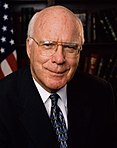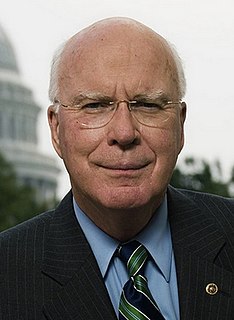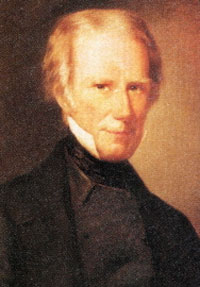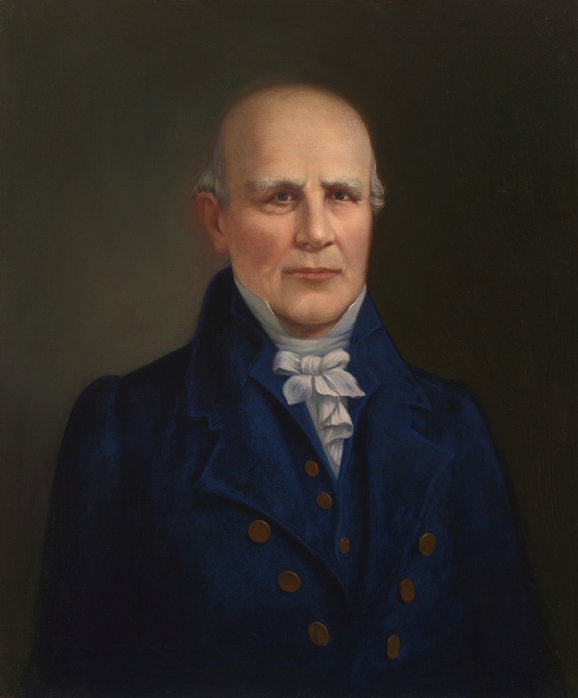Class 1 Class 1 U.S. Senators belong to the electoral cycle that has recently been contested in 2000, 2006, 2012, and 2018. The next election will be in 2024. | C
o
n
g
r
e
s
s | Class 3 Class 3 U.S. Senators belong to the electoral cycle that has recently been contested in 1998, 2004, 2010, and 2016. The next election will be in 2022. |
|---|
| # | Senator | Party | Years in office | Electoral history | T
e
r
m | T
e
r
m | Electoral history | Years in office | Party | Senator | # |
|---|
| Vacant | March 4, 1791 –
October 17, 1791 | Vermont elected its senators several months after statehood. | 1 | 2nd | 1 | Vermont elected its senators several months after statehood. | March 4, 1791 –
October 17, 1791 | Vacant |
| 1 | 
Moses Robinson | Anti-
Administration | October 17, 1791 –
October 15, 1796 | Elected October 17, 1791.
Resigned. | Elected October 17, 1791.
Lost re-election. | October 17, 1791 –
March 3, 1795 | Anti-
Administration | 
Stephen R. Bradley | 1 |
|---|
| 3rd |
Democratic-
Republican | 4th | 2 | Elected in 1794. | March 4, 1795 –
September 1, 1801 | Federalist | 
Elijah Paine | 2 |
|---|
| Vacant | October 15, 1796 –
October 18, 1796 | |
| 2 | 
Isaac Tichenor | Federalist | October 18, 1796 –
October 17, 1797 | Elected October 18, 1796 to finish Robinson's term. |
|---|
Elected October 18, 1796 to full term.
Resigned to become Governor of Vermont. | 2 | 5th |
| 3 | 
Nathaniel Chipman | Federalist | October 17, 1797 –
March 3, 1803 | Elected in 1797 to finish Tichenor's term.
Lost re-election. |
|---|
| 6th |
| 7th | 3 | Re-elected October 21, 1800.
Resigned. |
| | September 1, 1801 –
October 15, 1801 | Vacant |
| Elected to finish Paine's term. | October 15, 1801 –
March 3, 1813 | Democratic-
Republican | 
Stephen R. Bradley | 3 |
|---|
| 4 | Israel Smith | Democratic-
Republican | March 4, 1803 –
October 1, 1807 | Elected in 1802.
Resigned. | 3 | 8th |
|---|
| 9th |
| 10th | 4 | Re-elected in 1806.
Retired. |
| Vacant | October 1, 1807 –
October 10, 1807 | |
| 5 | Jonathan Robinson | Democratic-
Republican | October 10, 1807 –
March 3, 1815 | Elected to finish Smith's term. |
|---|
Re-elected in 1808. [1]
Retired. | 4 | 11th |
| 12th |
| 13th | 5 | Elected October 21, 1812. [2]
Resigned. | March 4, 1813 –
November 3, 1817 | Democratic-
Republican | Dudley Chase | 4 |
|---|
| 6 | 
Isaac Tichenor | Federalist | March 4, 1815 –
March 3, 1821 | Elected October 25, 1814. [3]
Retired. [4] | 5 | 14th |
|---|
| 15th |
Elected to finish Chase's term.
Resigned to serve as collector of customs for the district of Vermont. | November 4, 1817 –
January 8, 1818 | Democratic-
Republican | 
James Fisk | 5 |
|---|
| | January 8, 1818 –
October 20, 1818 | Vacant |
| Elected to finish Fisk's term. | October 20, 1818 –
March 3, 1825 | Democratic-
Republican | 
William A. Palmer | 6 |
|---|
| 16th | 6 | Elected October 20, 1818 to the following term.
Retired. |
| 7 | 
Horatio Seymour | Democratic-
Republican | March 4, 1821 –
March 3, 1833 | Elected in 1821. | 6 | 17th |
|---|
Adams-Clay
Democratic-
Republican | 18th | Adams-Clay
Democratic-
Republican |
Anti-
Jacksonian | 19th | 7 | Elected in 1825.
Declined to run for reelection. [5] | March 4, 1825 –
March 3, 1831 | Anti-
Jacksonian | Dudley Chase | 7 |
|---|
Re-elected in 1827.
Retired to run for Governor of Vermont; | 7 | 20th |
| 21st |
| 22nd | 8 | Elected in 1831. | March 4, 1831 –
April 11, 1842 | Anti-
Jacksonian | 
Samuel Prentiss | 8 |
|---|
| 8 | 
Benjamin Swift | Anti-
Jacksonian | March 4, 1833 –
March 3, 1839 | Elected in 1833.
Retired. | 8 | 23rd |
|---|
| 24th |
| Whig | 25th | 9 | Re-elected in 1837.
Resigned. | Whig |
| 9 | 
Samuel S. Phelps | Whig | March 4, 1839 –
March 3, 1851 | Elected in 1839. | 9 | 26th |
|---|
| 27th |
| | April 11, 1842 –
April 23, 1842 | Vacant |
Appointed to continue Prentiss's term.
Elected October 26, 1842 to finish Prentiss's term.
Retired. | April 23, 1842 –
March 3, 1843 | Whig | 
Samuel C. Crafts | 9 |
|---|
| 28th | 10 | Elected in 1843. | March 4, 1843 –
January 14, 1853 | Whig | 
William Upham | 10 |
|---|
Re-elected in 1845.
Defeated for reelection in 1850. [7] | 10 | 29th |
| 30th |
| 31st | 11 | Re-elected in 1848.
Died. |
| 10 | 
Solomon Foot | Whig | March 4, 1851 –
March 28, 1866 | Elected in 1850. | 11 | 32nd |
|---|
| | January 14, 1853 –
January 17, 1853 | Vacant |
Appointed to continue Upham's term.
Lost entitlement to sit. [8] | January 17, 1853 –
March 16, 1854 | Whig | 
Samuel S. Phelps | 11 |
|---|
| 33rd |
| | March 16, 1854 –
October 14, 1854 | Vacant |
Elected to finish Upham's term.
Retired. | October 14, 1854 –
March 3, 1855 | Free Soil | 
Lawrence Brainerd | 12 |
|---|
| Republican | 34th | 12 | Elected in 1855. | March 4, 1855 –
November 9, 1865 | Republican | 
Jacob Collamer | 13 |
|---|
| Re-elected in 1856. | 12 | 35th |
| 36th |
| 37th | 13 | Re-elected in 1861.
Died. |
Re-elected in 1862.
Died. | 13 | 38th |
| 39th |
| | November 9, 1865 –
November 21, 1865 | Vacant |
Appointed to continue Collamer's term.
Elected October 24, 1866 to finish Collamer's term.
Lost re-election. | November 21, 1865 –
March 3, 1867 | Republican | 
Luke P. Poland | 14 |
|---|
| Vacant | March 28, 1866 –
April 3, 1866 | |
| 11 | 
George F. Edmunds | Republican | April 3, 1866 –
November 1, 1891 | Appointed to continue Foot's term.
Elected October 24, 1866 to finish Foot's term. |
|---|
| 40th | 14 | Elected in 1866. | March 4, 1867 –
December 28, 1898 | Republican | 
Justin S. Morrill | 15 |
|---|
| Re-elected in 1868. | 14 | 41st |
| 42nd |
| 43rd | 15 | Re-elected in 1872. |
| Re-elected in 1874. | 15 | 44th |
| 45th |
| 46th | 16 | Re-elected in 1878. |
| Re-elected in 1880. | 16 | 47th |
| 48th |
| 49th | 17 | Re-elected in 1884. |
Re-elected in 1886.
Resigned to start a law practice. | 17 | 50th |
| 51st |
| 52nd | 18 | Re-elected in 1890. |
| 12 | 
Redfield Proctor | Republican | November 2, 1891 –
March 4, 1908 | Appointed to continue Edmunds's term.
Elected October 19, 1892 to finish Edmunds's term. |
|---|
| Re-elected in 1892. | 18 | 53rd |
| 54th |
| 55th | 19 | Re-elected in 1896.
Died. |
| | December 28, 1898 –
January 11, 1899 | Vacant |
Appointed to continue Morrill's term.
Retired when successor elected. | January 11, 1899 –
October 18, 1900 | Republican | 
Jonathan Ross | 16 |
|---|
| Re-elected in 1898. | 19 | 56th |
| Elected to finish Morrill's term. | October 18, 1900 –
July 23, 1923 | Republican | 
William P. Dillingham | 17 |
|---|
| 57th |
| 58th | 20 | Re-elected October 14, 1902. [9] |
Re-elected in 1904.
Died. | 20 | 59th |
| 60th |
| Vacant | March 4, 1908 –
March 24, 1908 | |
| 13 | 
John W. Stewart | Republican | March 24, 1908 –
October 21, 1908 | Appointed to continue Proctor's term.
Retired. |
|---|
| 14 | 
Carroll S. Page | Republican | October 21, 1908 –
March 3, 1923 | Elected to finish Stewart's term. |
|---|
| 61st | 21 | Re-elected October 20, 1908. |
| Re-elected October 18, 1910. | 21 | 62nd |
| 63rd |
| 64th | 22 | Re-elected in 1914. |
Re-elected in 1916.
Retired. | 22 | 65th |
| 66th |
| 67th | 23 | Re-elected in 1920.
Died. |
| 15 | 
Frank L. Greene | Republican | March 4, 1923 –
December 17, 1930 | Elected in 1922. | 23 | 68th |
|---|
| | July 23, 1923 –
November 7, 1923 | Vacant |
| Elected to finish Dillingham's term. | November 7, 1923 –
October 6, 1933 | Republican | 
Porter H. Dale | 18 |
|---|
| 69th |
| 70th | 24 | Re-elected in 1926. |
Re-elected in 1928.
Died. | 24 | 71st |
| Vacant | December 17, 1930 –
December 23, 1930 | |
| 16 | 
Frank C. Partridge | Republican | December 23, 1930 –
March 31, 1931 | Appointed to continue Greene's term.
Lost nomination to finish Greene's term. |
|---|
| 72nd |
| 17 | 
Warren Austin | Republican | April 1, 1931 –
August 2, 1946 | Elected to finish Greene's term. |
|---|
| 73rd | 25 | Re-elected in 1932.
Died. |
| | October 6, 1933 –
November 21, 1933 | Vacant |
Appointed to continue Dale's term.
Elected January 17, 1934 to finish Dale's term. | November 21, 1933 –
June 20, 1940 | Republican | 
Ernest W. Gibson | 19 |
|---|
| Re-elected in 1934. | 25 | 74th |
| 75th |
| 76th | 26 | Re-elected in 1938.
Died. |
| | June 20, 1940 –
June 24, 1940 | Vacant |
Appointed to continue his father's term.
Retired. | June 24, 1940 –
January 3, 1941 | Republican | 
Ernest W. Gibson Jr. | 20 |
|---|
Re-elected in 1940.
Resigned to become U.S. Ambassador to the United Nations | 26 | 77th | Elected in 1940 to finish Gibson's term.
Didn't take seat until January 10, 1941, as he wanted to remain Governor of Vermont. However, he was duly elected and qualified as senator. | January 3, 1941 –
January 3, 1975 | Republican | 
George Aiken | 21 |
|---|
| 78th |
| 79th | 27 | Re-elected in 1944. |
| Vacant | August 2, 1946 –
November 1, 1946 | |
| 18 | 
Ralph Flanders | Republican | November 1, 1946 –
January 3, 1959 | Appointed to finish Austin's term. |
|---|
| Elected in 1946. | 27 | 80th |
| 81st |
| 82nd | 28 | Re-elected in 1950. |
Re-elected in 1952.
Retired. | 28 | 83rd |
| 84th |
| 85th | 29 | Re-elected in 1956. |
| 19 | 
Winston L. Prouty | Republican | January 3, 1959 –
September 10, 1971 | Elected in 1958. | 29 | 86th |
|---|
| 87th |
| 88th | 30 | Re-elected in 1962. |
| Re-elected in 1964. | 30 | 89th |
| 90th |
| 91st | 31 | Re-elected in 1968.
Retired. |
Re-elected in 1970.
Died. | 31 | 92nd |
| Vacant | September 10, 1971 –
September 16, 1971 | |
| 20 | 
Robert Stafford | Republican | September 16, 1971 –
January 3, 1989 | Appointed to continue Prouty's term.
Elected January 7, 1972 to finish Prouty's term. |
|---|
| 93rd |
| 94th | 32 | Elected in 1974. | January 3, 1975 –
present | Democratic | 
Patrick Leahy | 22 |
|---|
| Re-elected in 1976. | 32 | 95th |
| 96th |
| 97th | 33 | Re-elected in 1980. |
Re-elected in 1982.
Retired. | 33 | 98th |
| 99th |
| 100th | 34 | Re-elected in 1986. |
| 21 | 
Jim Jeffords | Republican | January 3, 1989 –
June 6, 2001 | Elected in 1988. | 34 | 101st |
|---|
| 102nd |
| 103rd | 35 | Re-elected in 1992. |
| Re-elected in 1994. | 35 | 104th |
| 105th |
| 106th | 36 | Re-elected in 1998. |
Re-elected in 2000.
Retired. | 36 | 107th |
| Independent | June 6, 2001 –
January 3, 2007 |
| 108th |
| 109th | 37 | Re-elected in 2004. |
| 22 | 
Bernie Sanders | Independent [11] | January 3, 2007 –
present | Elected in 2006. | 37 | 110th |
|---|
| 111th |
| 112th | 38 | Re-elected in 2010. |
| Re-elected in 2012. | 38 | 113th |
| 114th |
| 115th | 39 | Re-elected in 2016. |
| Re-elected in 2018. | 39 | 116th |
| 117th |
| 118th | 40 | To be determined in the 2022 election. |
| # | Senator | Party | Years in office | Electoral history | T
e
r
m | | T
e
r
m | Electoral history | Years in office | Party | Senator | # |
|---|
| Class 1 | Class 3 |
|---|

















































